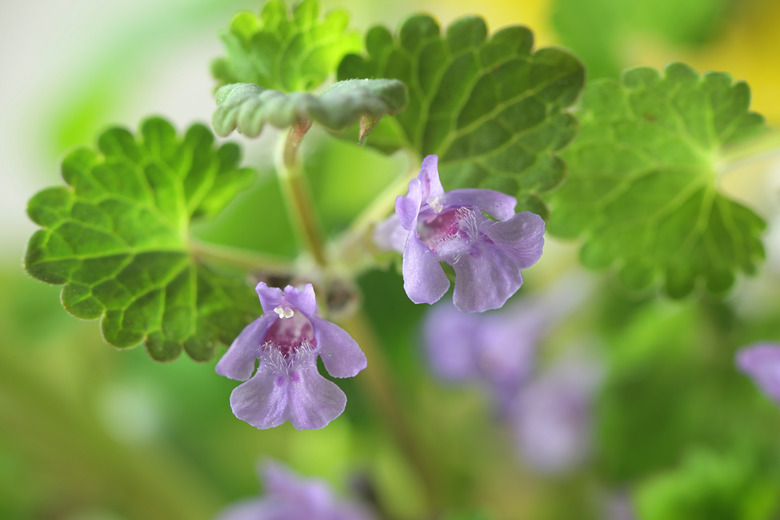The Best Way To Kill Purple Weeds
We may receive a commission on purchases made from links.
Purple may be the color of royalty, but when you see those purple weeds in the garden, they might make you see red. The best way to kill purple weeds is to prevent germination by using cultural methods followed by mechanical controls, manual removal and the judicious use of preemergent or post-emergent herbicides.
About Purple Weeds
About Purple Weeds
Weeds are often plants growing in the wrong place. Lovely purple-flowering violets (Viola spp.), for example, brighten landscapes in U.S. Department of Agriculture plant hardiness zones 3 through 9, but when they encroach on the flower bed or lawn, they become weeds.
Members of the mint family, such as purple deadnettle (Lamium purpureum), henbit (Lamium amplexicaule) and creeping Charlie (Glechoma hederacea), sport purple flowers and green to purple leaves. These cool-season, winter- and spring-flowering weeds do provide much needed nectar to bees in early spring. While purple deadnettle and henbit are annuals, creeping Charlie overwinters in USDA zones 4 through 9 and can become invasive if not contained.
Cultural Controls for Purple Weeds
Cultural Controls for Purple Weeds
Use cultural controls to prevent the weeds from germinating and taking over the garden and lawn. Encourage thick turf by applying lawn fertilizers according to a soil test or the package directions in the absence of a soil test. Cool-season lawns should be fertilized in late summer or early fall, while warm-season grasses are generally fertilized in late spring and early summer. Water less often but deeply so the grass roots delve into the soil and crowd out weeds.
Mow lawns at the recommended height for the grass species' optimum health. A vigorously growing lawn leaves little water and nutrients for weeds to germinate and thrive. In addition, regular mowing removes the weed flowers before they go to seed, which reduces the number of weeds the following year. The same efforts apply to landscape plants. Keep flowers and ground covers lush with fertilizer and sufficient water and by pinching back as needed so the weeds have no place to grow.
Mechanical Weed Control
Mechanical Weed Control
Prevent weed seed germination by applying a 3- to 4-inch layer of mulch around landscape plants, shrubs and trees. While mulch can reduce the number of weed seeds that germinate, you'll still have to pull a few weeds, preferably while they're young and not yet firmly established in the landscape. Water first to soften the soil, put on your gloves and sunscreen and then hand-pull the weeds. A weed-pulling tool helps you pull out every bit of deep-rooted weeds so they don't regenerate from the roots.
Chemical Controls and Purple Weeds
Chemical Controls and Purple Weeds
Large infestations of weeds may require a preemergent or post-emergent herbicide to control their rampant growth. Before applying any herbicides, determine what kind of weeds you're fighting and read the label carefully to ensure that you don't damage or kill desirable plants. In addition, put on protective gear, including safety goggles and a mask, to protect yourself while mixing and applying the chemicals.
Use a preemergent herbicide in early spring or fall before the weed seeds germinate to reduce the number of weeds in the garden or lawn. The disadvantage of preemergent products is that you'll have to wait at least four weeks before overseeding the lawn or planting flower or vegetable seeds in the garden.
Post-emergent herbicides are effective against actively growing weeds but use caution. Some herbicides target broadleaf weeds, while glyphosate products are nonselective and will kill most plants. Apply the least amount of herbicide necessary to control the weeds while avoiding accidental application to desirable plants and lawns.
